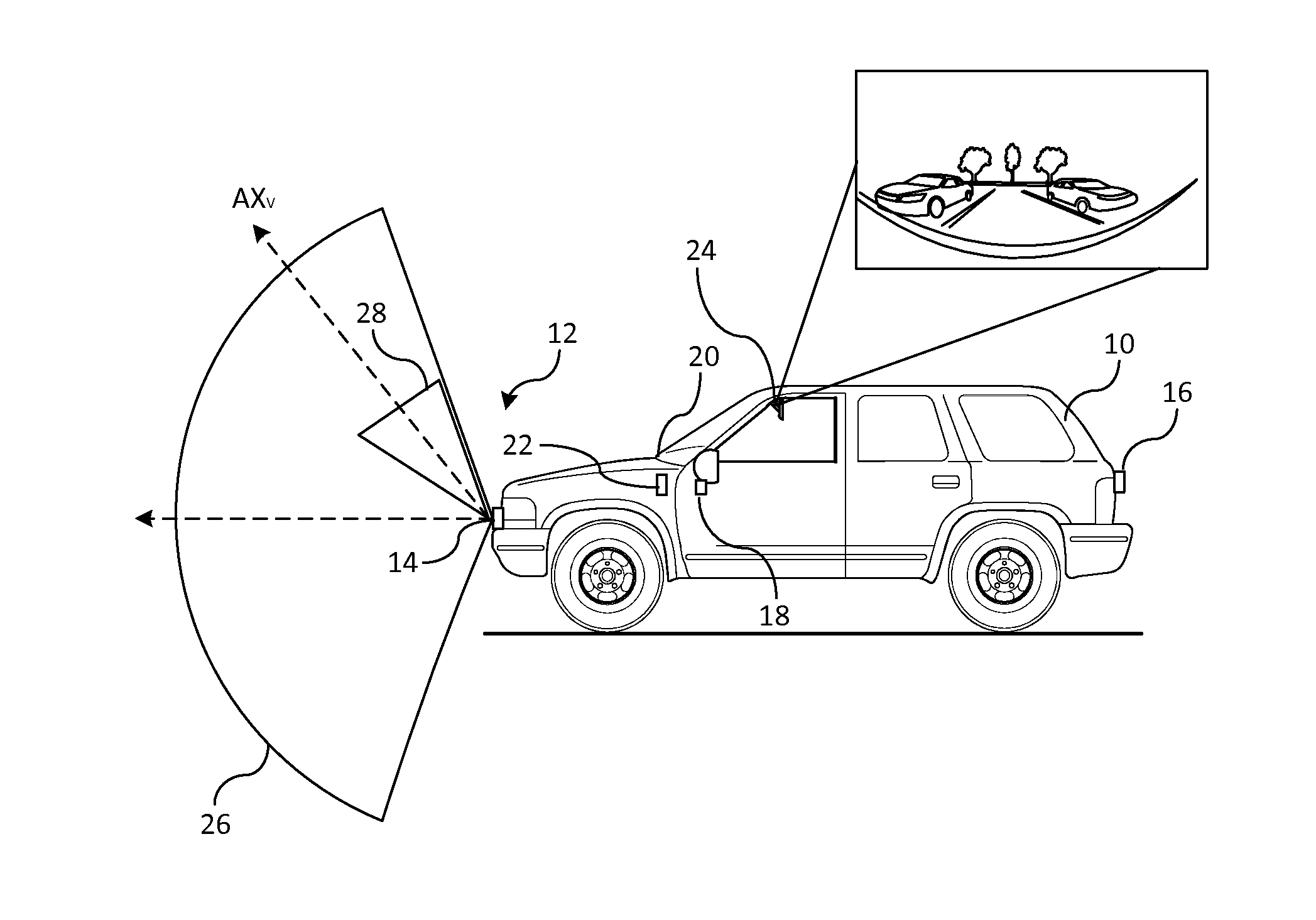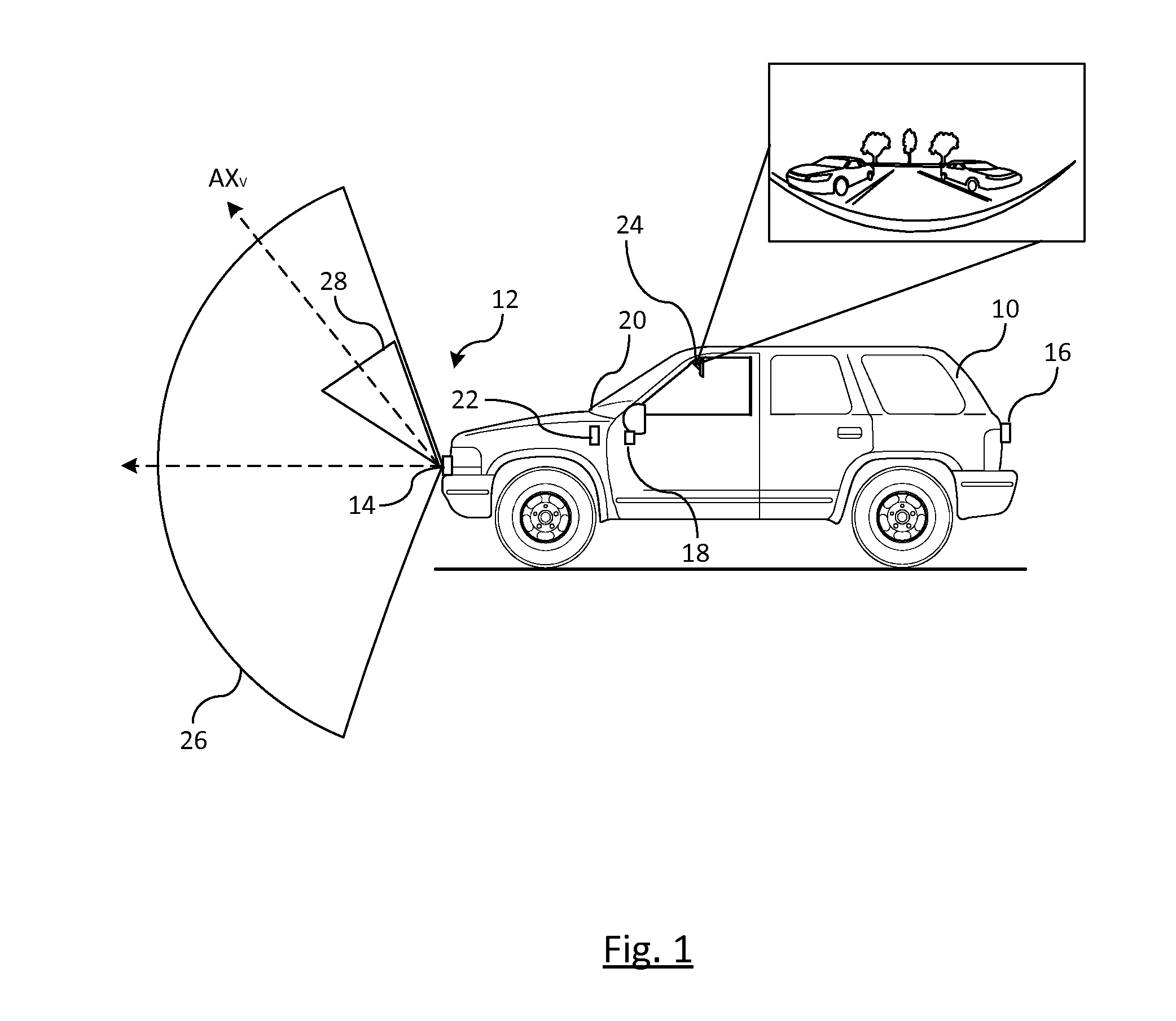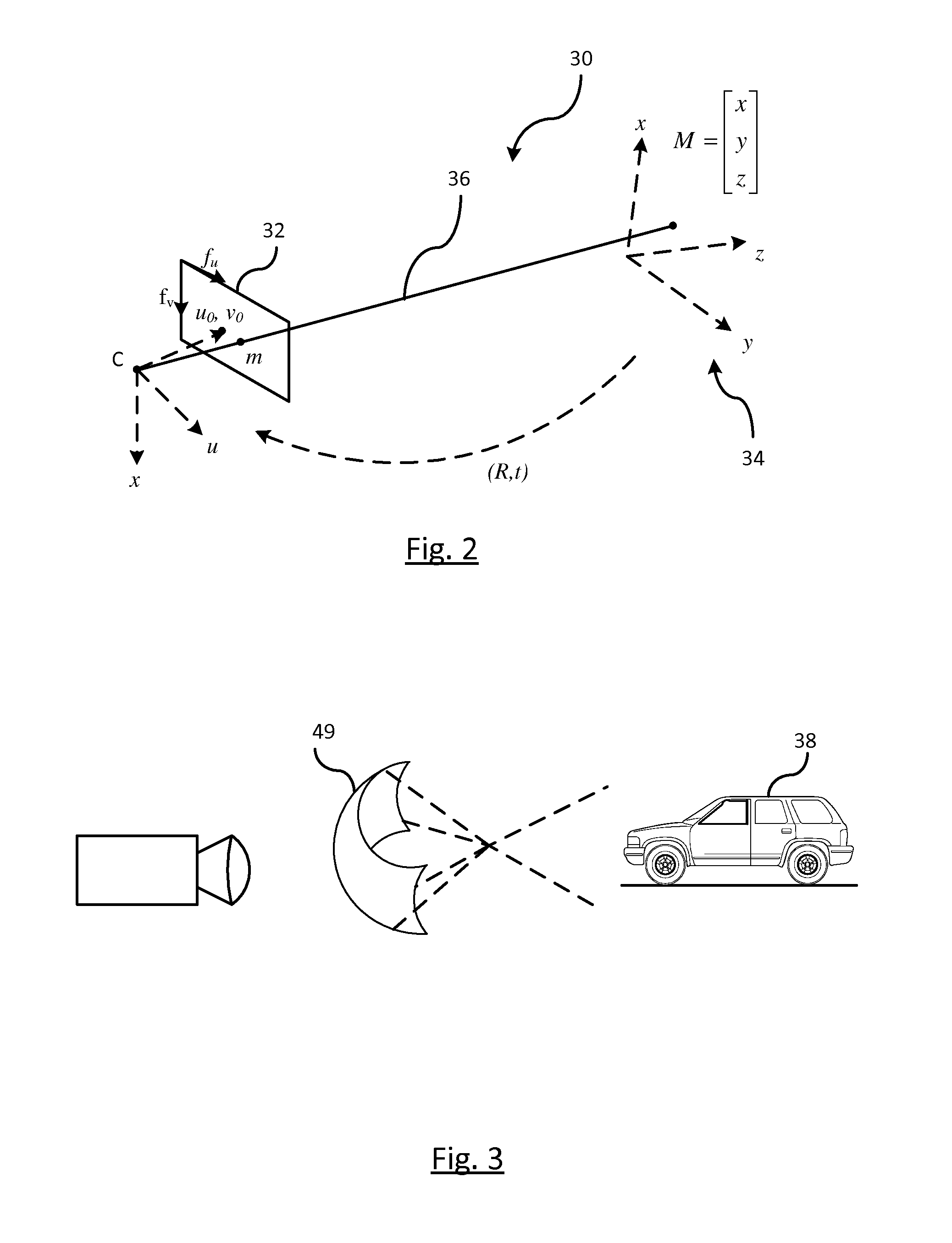Vision-based object sensing and highlighting in vehicle image display systems
a technology of vehicle image display and object sensing, which is applied in the field of image capture and display in vehicle imaging systems, can solve the problems of not being able to determine the parameters of such parameters, not having awareness of the condition where the vehicle could be a potential collision, and objects such as vehicles approaching to the side of the vehicle may be distorted as well
- Summary
- Abstract
- Description
- Claims
- Application Information
AI Technical Summary
Benefits of technology
Problems solved by technology
Method used
Image
Examples
first embodiment
[0089]FIG. 16 illustrates a flowchart of first embodiment for identifying objects on the dynamic rearview mirror display device. While the embodiments discussed herein describe the display of the image on the rearview mirror device, it is understood that the display device is not limited to the rearview mirror and may include any other display device in the vehicle. Blocks 110-116 represent various sensing devices for sensing objects exterior of the vehicle, such as vehicles, pedestrians, bikes, and other moving and stationary objects. For example, block 110 is a side blind zone alert sensor (SBZA) sensing system for sensing objects in a blind spot of the vehicle; block 112 is a parking assist (PA) ultrasonic sensing system for sensing pedestrians; block 44 is a rear cross traffic alert (RTCA) system for detecting a vehicle in a rear crossing path that is transverse to the driven vehicle; and block 116 is a rearview camera for capturing scenes exterior of the vehicle. In FIG. 16, an...
second embodiment
[0092]FIG. 19 illustrates a flowchart of a second embodiment for identifying objects on the rearview mirror display device. Similar reference numbers will be utilized throughout for already introduced devices and systems. Blocks 110-116 represent various sensing devices such as SBZA, PA, RTCA, and a rearview camera. In block 129, a processing unit provides an object overlay onto the image. The object overlay is an overlay that identifies both the correct location and size of an object as opposed to just placing a same sized symbol over the object as illustrated in FIG. 18. In block 120, the rearview display device displays the dynamic image with the object overlay symbols and collective image is then displayed on the rearview display device in block 120.
[0093]FIG. 20 is an illustration of a dynamic image displayed on the dynamic rearview mirror device. Object overlays 132-138 identify vehicles proximate to the driven vehicle that have been identified by one of the sensing systems th...
third embodiment
[0095]FIG. 21 illustrates a flowchart of third embodiment for identifying objects on the rearview mirror display device by estimating a time to collision base on an inter-frame object size and location expansion of an object overlay, and illustrate the warning on the dynamic rearview display device. In block 116, images are captured by an image capture device.
[0096]In block 144, various systems are used to identify objects captured in the captured image. Such objects include, but not limited to, vehicles from devices described herein, lanes of the road based on lane centering systems, pedestrians from pedestrian awareness systems, parking assist system, and poles or obstacles from various sensing systems / devices.
[0097]A vehicle detection system estimates the time to collision herein. The time to collision and object size estimation may be determined using an image based approach or may be determined using a point motion estimation in the image plane, which will be described in detai...
PUM
 Login to View More
Login to View More Abstract
Description
Claims
Application Information
 Login to View More
Login to View More - R&D
- Intellectual Property
- Life Sciences
- Materials
- Tech Scout
- Unparalleled Data Quality
- Higher Quality Content
- 60% Fewer Hallucinations
Browse by: Latest US Patents, China's latest patents, Technical Efficacy Thesaurus, Application Domain, Technology Topic, Popular Technical Reports.
© 2025 PatSnap. All rights reserved.Legal|Privacy policy|Modern Slavery Act Transparency Statement|Sitemap|About US| Contact US: help@patsnap.com



